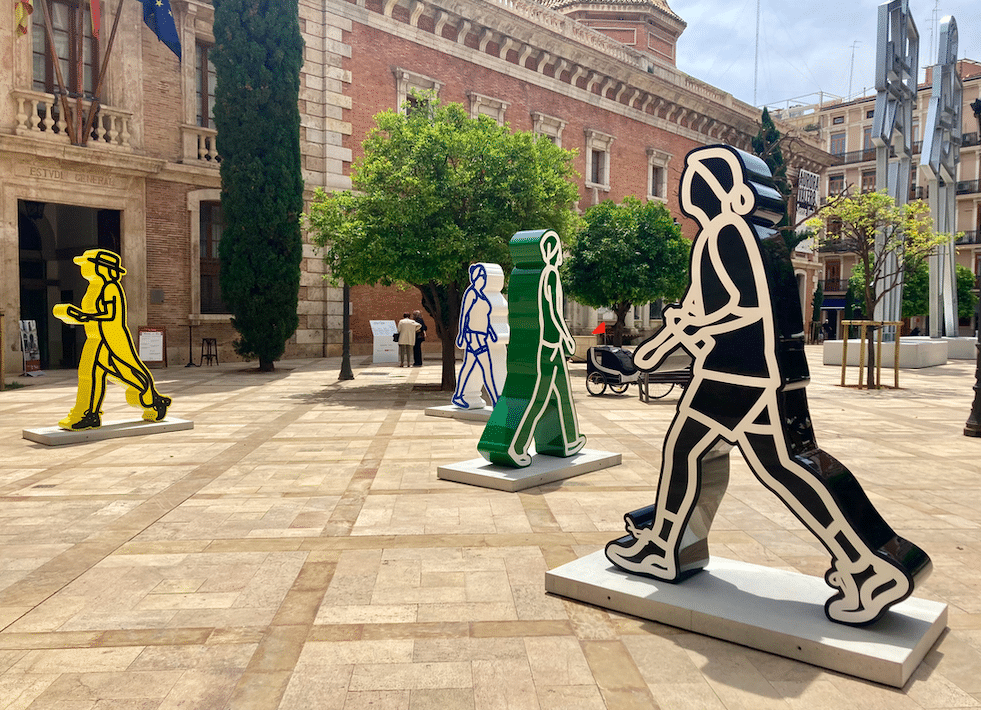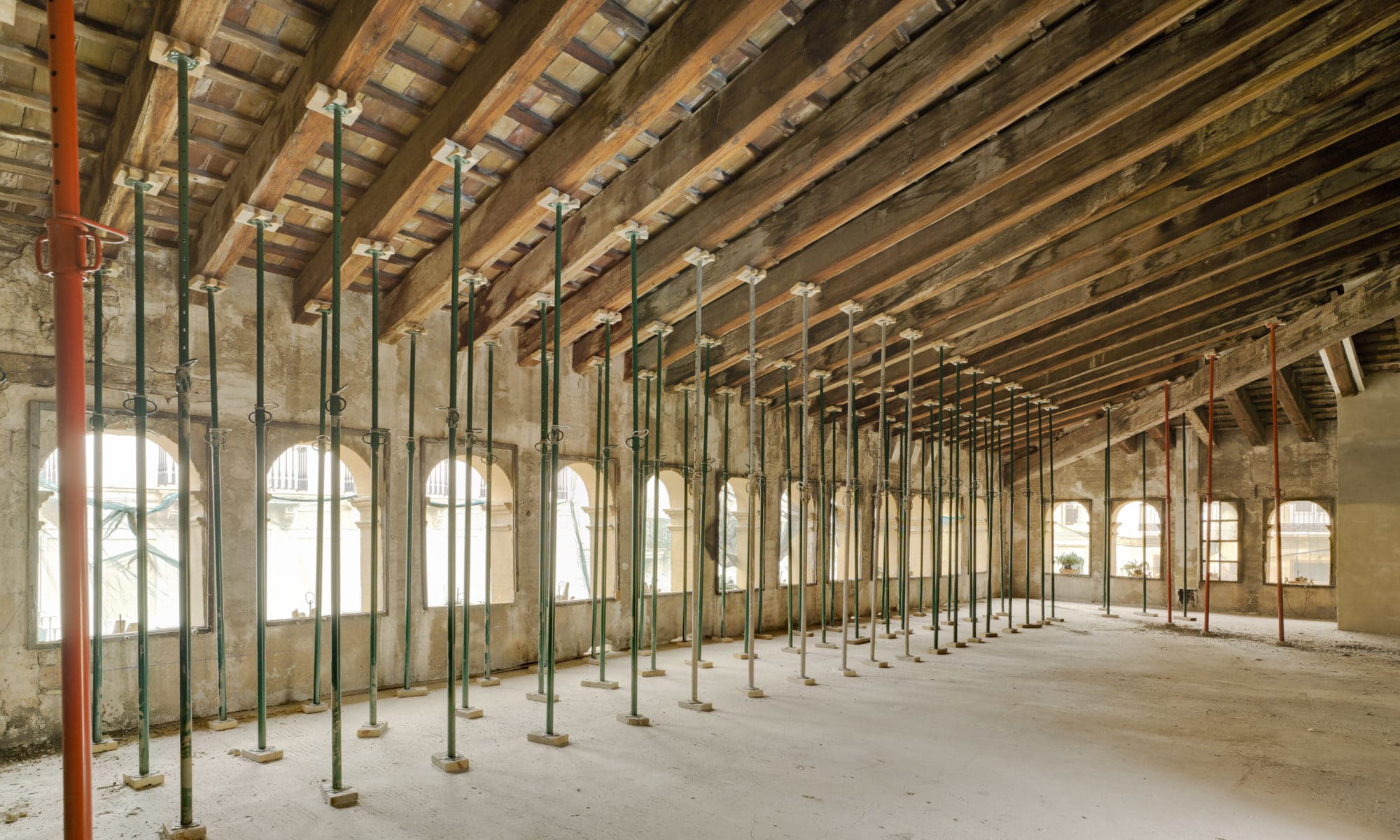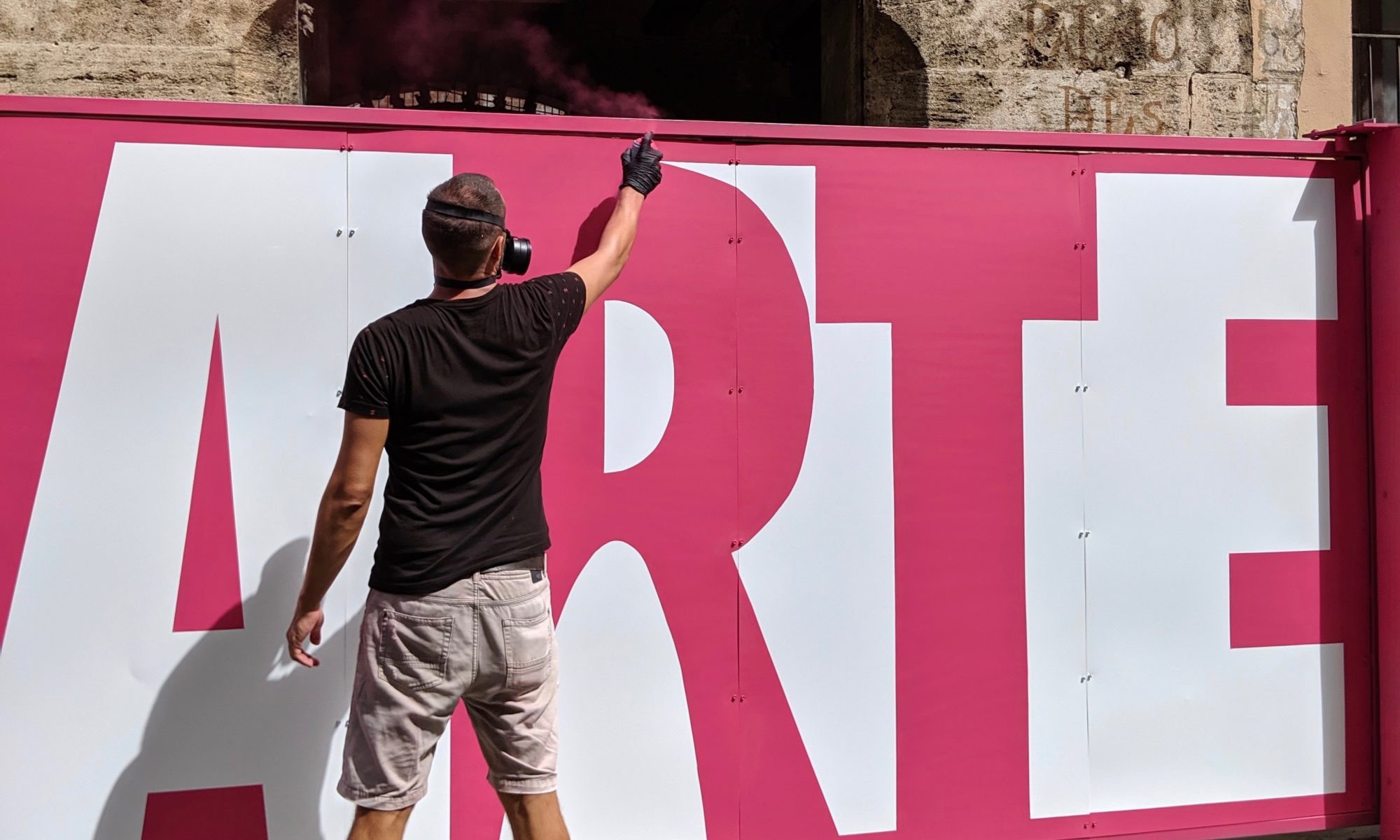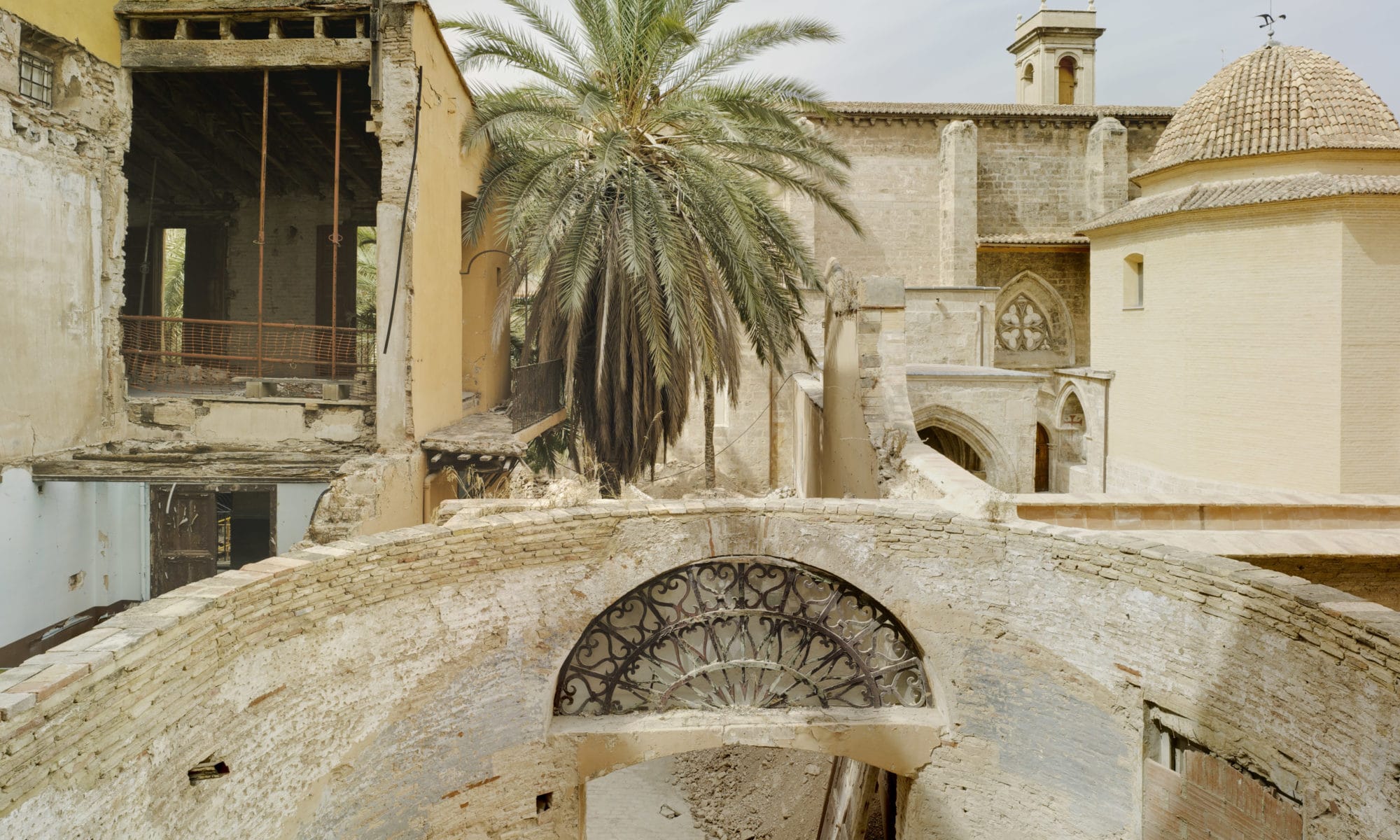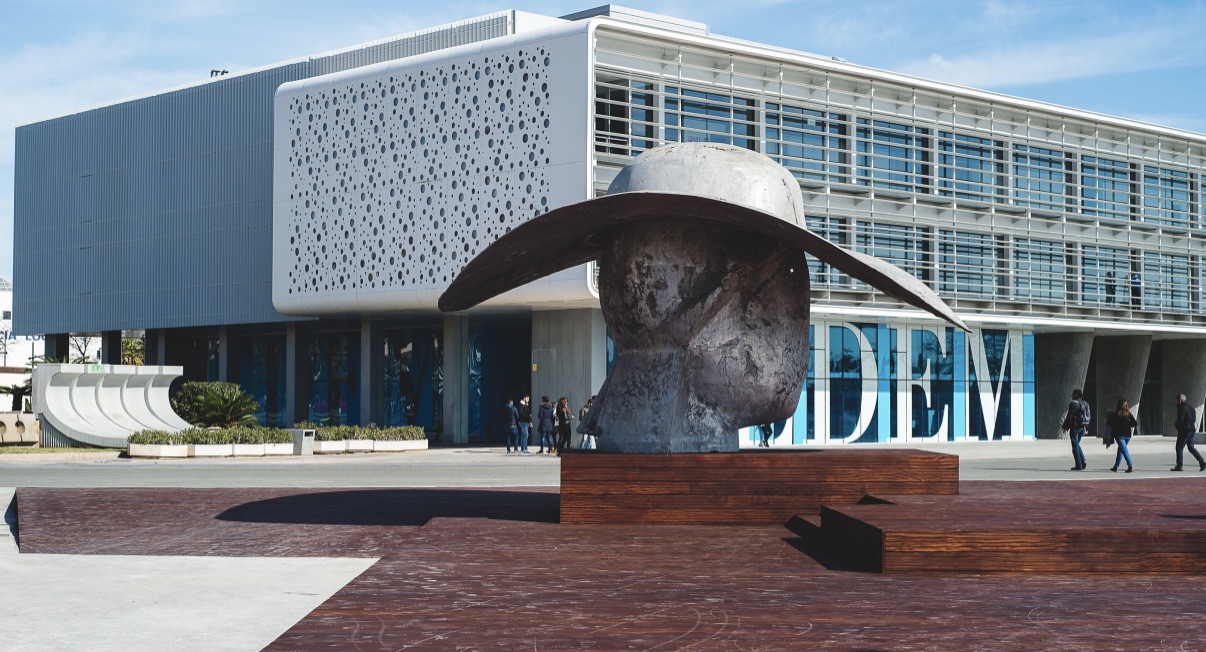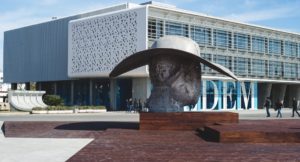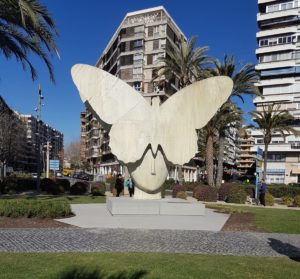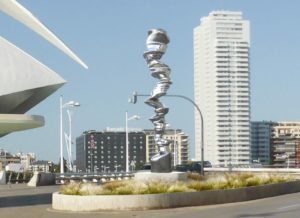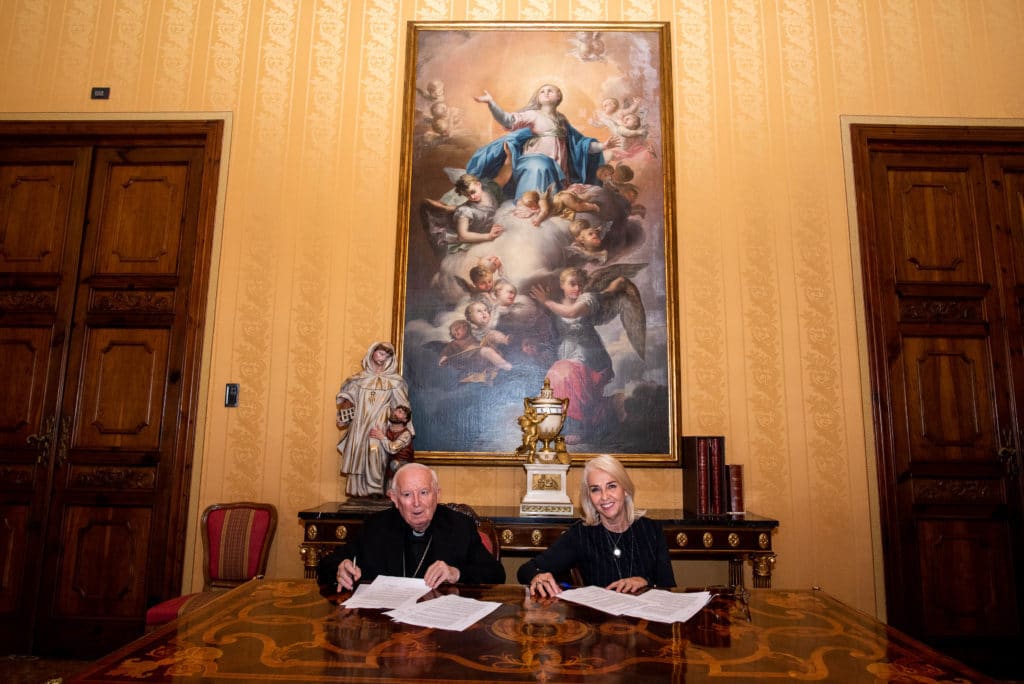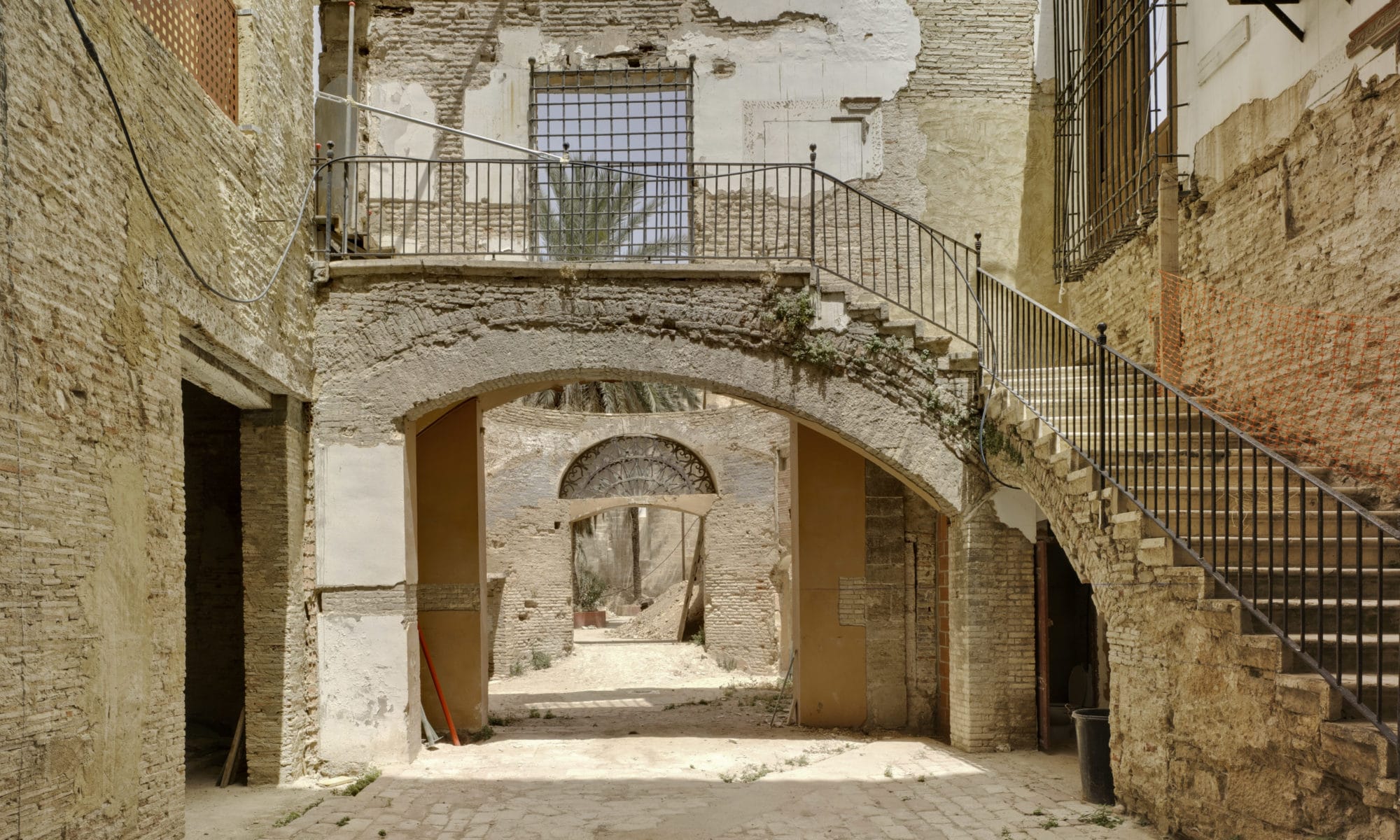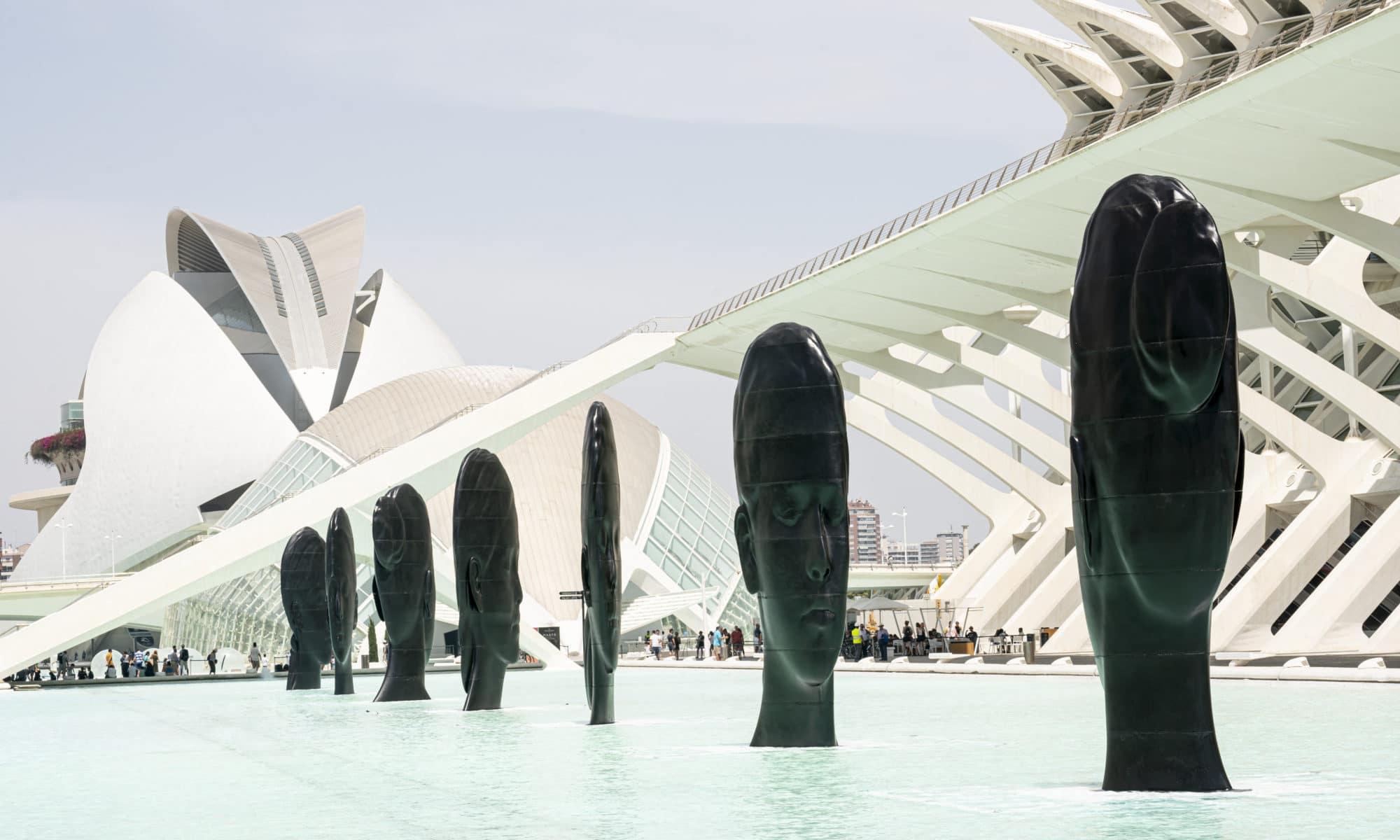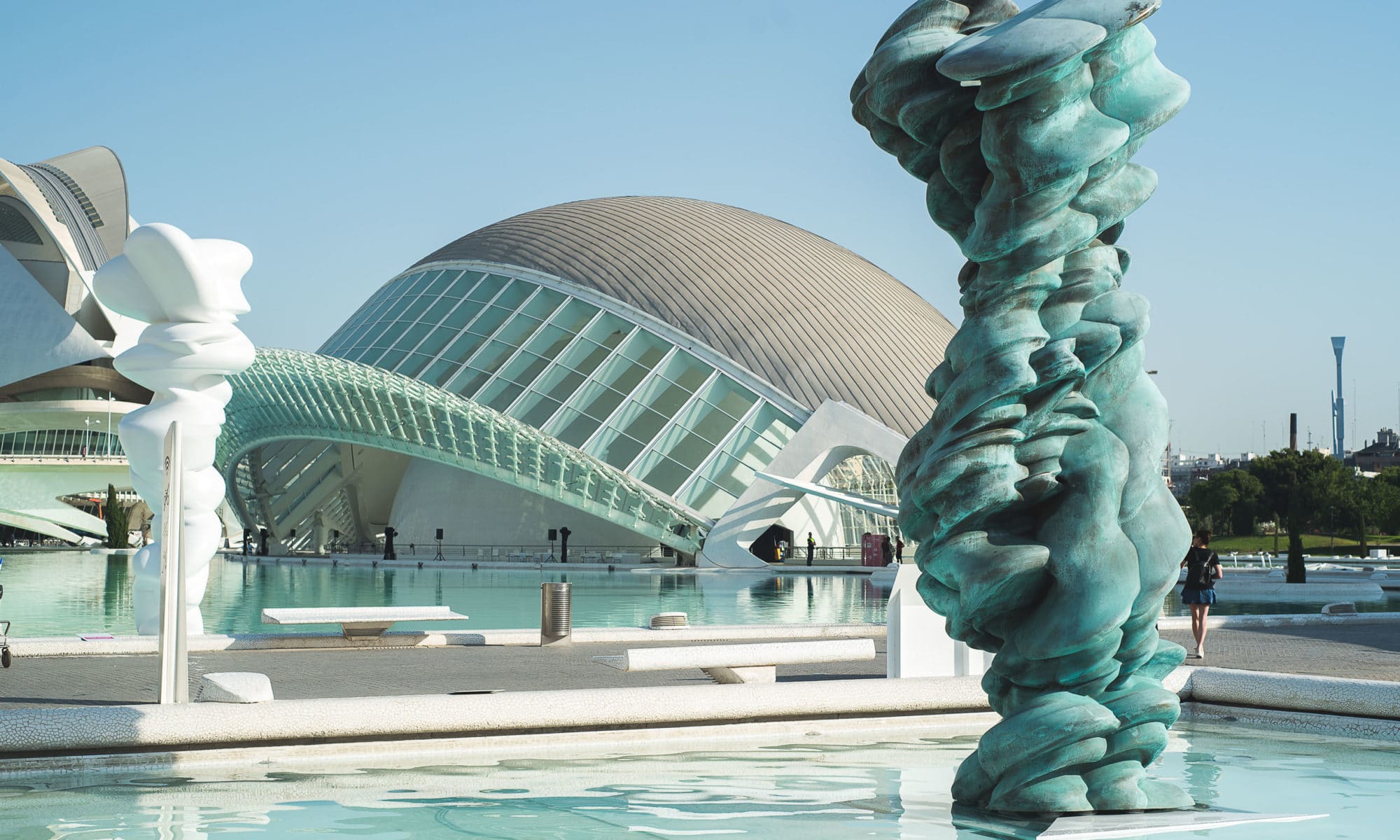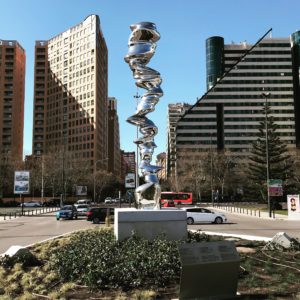The exhibition organised by the Hortensia Herrero Foundation presents, for the first time in Valencia, monumental sculptures by Julian Opie (London, 1958). The exhibition brings together sixteen works, installed in the Plaza del Colegio del Patriarca and the La Nau Cultural Centre, which focus on the human figure in motion, walking through the city, alone or in a crowd; walking, running to catch a train or waiting in the square with their arms folded.
The event transcends the usual margins of a museum to take over the streets in the centre of Valencia with the aim of bringing contemporary art to the public. Specifically for this project, Julian Opie has created two previously unseen steel sculptures that are twelve metres high and weigh six tonnes and occupy the Plaza del Colegio del Patriarca, and which will change the city’s landscape for the coming few months. The pieces represent two human figures, people from the artist’s circle whom he captures carrying out their everyday activities.
Next to them is a sculptural group of four walkers, which are over two metres tall, that originated from the photographs Opie takes of anonymous people walking along the street. These pieces look more like three-dimensional drawings than sculptures. And all the work by the British creator has its origin in drawing, the first visual thought of every artist.
The exhibition continues in the cloister to La Nau with figures in dialogue with the statue of Luis Vives. A contrast between the new and the old. The contemporary pieces are set beside a nineteenth-century sculpture by José Aixá. The academy’s statue represents a man who was ahead of his time, a Renaissance humanist who was born in Valencia and studied at the university, but moved to Julian Opie’s country to work at the court of Henry VIII along with his friend and colleague Thomas More. These sculptures have now travelled in the opposite direction to that taken by Luis Vives by travelling from London to Valencia to pay homage to the Valencian thinker.
The exhibition is completed with two light boxes, two cubes with more walkers and his well-known animations on LED screens, visions of anonymous crowds going about their daily business in big cities. These pieces, in the same style as the friezes in ancient Egyptian art, show characters with their facial features hidden, linked by the black lines with which Opie always defines his figures.
According to Opie, “the earliest Greek and Egyptian statues were often carved as moving figures. This implicit movement gives a dynamic and an elegance to the figure, a perception of intention, independence and power. A standing figure seems to be reacting to the observer. However, a walking figure is distracted, so it can observed without confrontation. The whole idea of scale is somewhat strange, we read scale in relation to ourselves – elephants are big, ants are small – but it can easily be reversed; solar systems can look like ping-pong balls, and the interiors of computers like Asian cities. We have the ability to project and see from outside our perspective”.
The exhibition, which has the collaboration of Valencia City Council and the University of Valencia, through the Vice-Rectorate of Culture and Sport, will be open from 27 May until 19 September 2021.
Julian Opie
Julian Opie was born in 1958 in London and graduated in 1983 from Goldsmiths School of Art. He lives and works in London.
With public commissions from Seoul to New York, Luxembourg to Zurich and a steady flow of large museum exhibitions internationally, the work of Julian Opie is known throughout the world. Opie’s distinctive formal language is instantly recognisable and reflects his artistic preoccupation with the idea of representation, and the means by which images are perceived and understood.
Always exploring different techniques both cutting edge and ancient, Opie plays with ways of seeing through reinterpreting the vocabulary of everyday life; his reductive style evokes both a visual and spatial experience of the world around us. Taking influence from classical portraiture, Egyptian hieroglyphs and Japanese woodblock prints, as well as public signage, information boards and traffic signs, the artist connects the clean visual language of modern life, with the fundamentals of art history.
Major museum exhibitions include Kunstverein, Cologne; Hayward Gallery and ICA in London; K21, Dusseldorf; MAK, Vienna; Mito Tower, Japan, CAC, Malaga; IVAM, Valencia; MoCAK, Krakow; Tidehalle, Helsinki, Fosun Foundation, Shanghai, Suwon IPark Museum of Art, National Gallery of Victoria, Melbourne and Berardo Museum, Lisbon.
Public projects include Dentsu Building, Tokyo 2002; City Hall Park, New York 2004; River Vltava, Prague 2007; Calgary, Canada, 2012; PKZ, Zurich 2014; Carnaby Street, London 2016; Tower 535, Hong Kong 2016 and Fosun Foundation, Shanghai 2018.
Public art collections holding Opie’s works include, Tate, British Museum, Victoria & Albert, Arts Council, British Council and National Portrait Gallery in London; MoMA, New York; ICA, Boston USA; Essl Collection, Vienna; The Israel Museum in Jerusalem and Takamatsu City Museum of Art, Japan.

